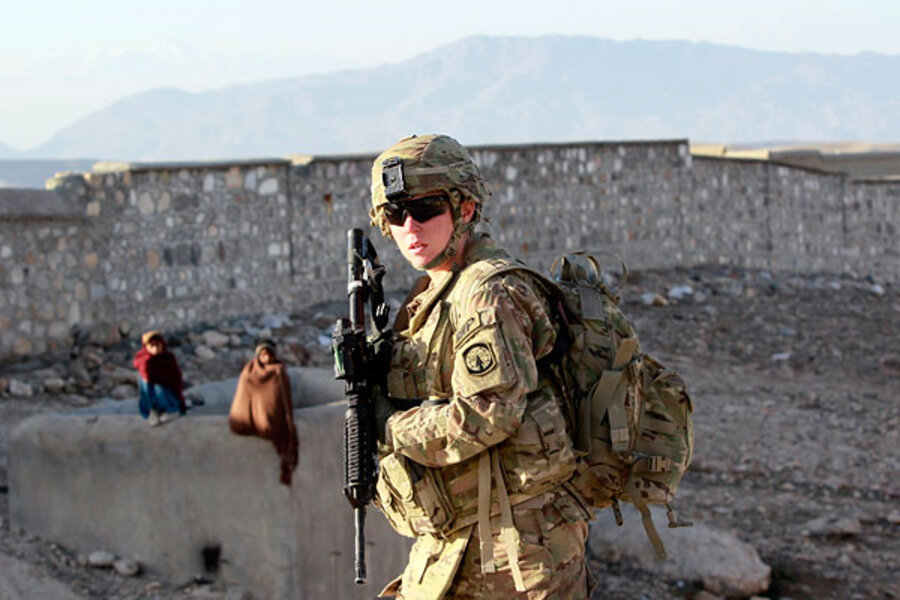Pentagon to allow women in combat
Loading...
| WASHINGTON
The U.S. military will formally end its ban on women serving in frontline combat roles, officials said on Wednesday, in a move that could open thousands of fighting jobs to female service members for the first time.
The move knocks down another societal barrier in the U.S. armed forces, after the Pentagon in 2011 scrapped its "Don't Ask, Don't Tell" ban on gays and lesbians serving openly in the military.
U.S. defense officials said the decision to end the ban had been taken by outgoing U.S. Defense Secretary Leon Panetta and individual military services would have until 2016 to seek exemptions if they believed any combat roles should remain closed to women.
Panetta is expected to announce the decision formally on Thursday. It will come after 11 years of non-stop war that has seen 84 women killed as a result of hostile action in the unpopular, costly wars in Iraq and Afghanistan.
The military services will have until May 15 to submit a plan on how they will comply by 2016.
Women have represented around 2 percent of the casualties of in Iraq and Afghanistan and some 12 percent - or 300,000 - of those deployed in the war efforts in the past 11 years, in which there were often no clearly defined front lines, and where deadly guerrilla tactics have included roadside bombs that kill and maim indiscriminately.
"This is an historic step for equality and for recognizing the role women have, and will continue to play, in the defense of our nation," said Democratic Senator Patty Murray from Washington, the outgoing head of the Senate Veterans Affairs Committee.
The planned move was also welcomed by Democratic Senator Carl Levin of Michigan, head of the Senate Armed Services Committee, who said it reflected the "reality of 21st century military operations."
The American Civil Liberties Union, which filed a suit in November seeking to force the Pentagon to end the ban, applauded the move, which overturns a 1994 policy preventing women from serving in small front-line combat units.
'Historic moment'
A plan for implementing the decision will have to be approved by the defense secretary and notified to Congress. The plan will guide how quickly the new combat jobs open up and whether the services will seek exemptions to keep some closed.
Senator Jim Inhofe, a Republican from Oklahoma, questioned the extent to which women would ultimately gain access to front-line combat, saying he doubted there would be a "broad opening."
Michael O'Hanlon, a defense analyst at the Brookings Institution think tank, noted that integrating women was "a very delicate matter." He called for the Pentagon to take a gradual approach, perhaps starting with special forces.
Former female service members cheered the move.
Anu Bhagwati, a former Marine captain and head of the Service Women's Action Network, said her decision to leave the Marine Corps in 2004 was partly due to the combat exclusion policy.
"I know countless women whose careers have been stunted by combat exclusion in all the branches," said Bhagwati, who called the decision an "historic moment."
"I didn't expect it to come so soon," she said.
The move comes nearly a year after the Pentagon unveiled a policy that opened 14,000 new jobs to women but still prohibited them from serving in infantry, armor and special operations units whose main function was to engage in frontline combat.
For Panetta, it will add to his legacy as a secretary who oversaw the end of "Don't Ask, Don't Tell" and pushed the process to end discrimination against women.
Asked last year why women who had served in Iraq and Afghanistan conducting security details and house-to-house searches were still being formally barred from combat positions, Pentagon officials said the services wanted to see how they performed in the new positions before opening up further.
(Additional reporting by Eric Johnson in Chicago and Marty Graham in San Diego; Editing by Sandra Maler and David Brunnstrom)







